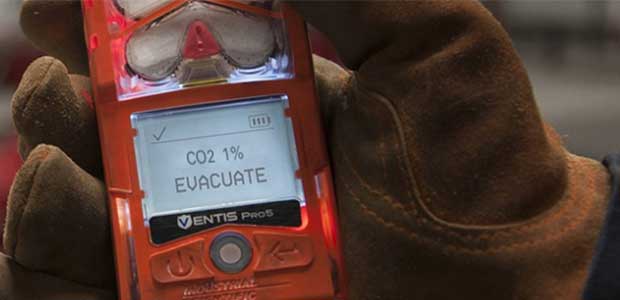
What You Need to Know About Gas Hazards and the COVID-19 Vaccine
With the beginning of the distribution of the COVID-19 vaccine comes the new concern of exposure to harmful gases.
- By Dave D. Wagner
- Mar 01, 2021
When news broke that the FDA had approved Pfizer’s version of the COVID-19 vaccine, the world rejoiced. But on the heels of the announcement, a problem began to take shape.
Pfizer’s version of the COVID-19 vaccine must be kept extremely cold—a chilling minus 70 degrees Celsius to be exact—which leads to invisible gas hazards when transporting and storing the vaccine.
Both transportation and storage require cold temperatures to properly sustain the vaccine doses, making gas detection a crucial element of delivering this lifesaving vaccine around the world without putting people in danger throughout the process.
Transporting the COVID-19 Vaccine
Due to the extreme temperature requirements for the vaccine, transportation likely requires some form of dry ice. Dry ice, which is created by compressing carbon dioxide (CO2), gives off CO2 as it “melts.” When transported in bulk, this CO2 can put people nearby in danger by displacing oxygen.
Low oxygen levels are especially concerning when carrying the vaccine on an airplane. Any potential for CO2 on a plane means it could get into the cockpit, and that could put everyone on board in danger.
For truck shipments, where the supply gets broken down from bulk into smaller deliveries, the issue of leaking CO2 is a minor but still present threat. During truck transport, the vaccine and dry ice are usually in a separate trailer, away from the driver. When those shipments are broken down for last mile delivery, the quantity of dry ice they are carrying is smaller and less likely to result in dangerously low oxygen levels.
Unfortunately, CO2 can be difficult to detect without the right equipment. To monitor changing CO2 levels when working with dry ice, look for a flexible multi-gas monitor that offers both oxygen and CO2 sensors.
Some multi-gas monitors allow you to monitor CO2 and a number of other gases with wireless connectivity so you can view real-time gas readings remotely through live monitoring software. With a setup like this, you can see CO2 readings from gas detectors on a cell phone or computer to ensure your team is safe, while actionable alerts on the gas detector can tell users exactly how to respond when an alarm sounds. This means that even inexperienced gas detector users can quickly and confidently make a safe decision when conditions become dangerous.
Storing the COVID-19 Vaccine
In terms of storage, warehouses, hospitals or other health centers are likely to store the vaccine in cryogenic rooms or coolers to achieve the ultra-cold temperatures that keep the vaccine stable. These cryogenic cooling methods rely on liquid nitrogen, which requires some special precautions.
When liquid nitrogen is involved, you need to be concerned about leaks. Similar to CO2, liquid nitrogen also displaces oxygen. In rooms with cryogenic coolers, a nitrogen leak will fill the room and deplete oxygen. Entering a room with a leak without first knowing whether it’s safe to do so may result in death. This is why gas monitors are key to worker safety.
Many medical facilities have specific health and safety standards to maintain when using potentially dangerous materials. In some hospitals, for instance, local fire departments and agencies require oxygen monitoring when liquid nitrogen is being used.
While labs and facilities that produce the vaccine are likely to use fixed monitors to monitor health and safety standards long term, portable, easy-to-use gas monitors with oxygen sensors are useful for facilities that might not have a gas detection program in place. Interchangeable sensors enable gas detectors to quickly adapt to situations where it is necessary to monitor unsafe levels of oxygen, for instance, when storing vaccines during a global pandemic.
Keep Basic Safety in Mind
With the dangers of COVID-19 so clear, it can be easy to forget about invisible gas hazards. However, it is important to monitor low oxygen levels and high carbon dioxide levels when transporting and storing the COVID-19 vaccine. It could mean the difference between a safe situation and a potentially life-threatening one.
Whether it’s a rush request from medical labs, hospitals or air or ground transport, the vaccines need to move quickly and with the safety of workers in mind. This means you can’t risk hazardous gases putting people in danger, thus delaying a time-sensitive vaccine.
Look for a gas detection partner that can serve you, so that you can serve others.
This article originally appeared in the March 2021 issue of Occupational Health & Safety.